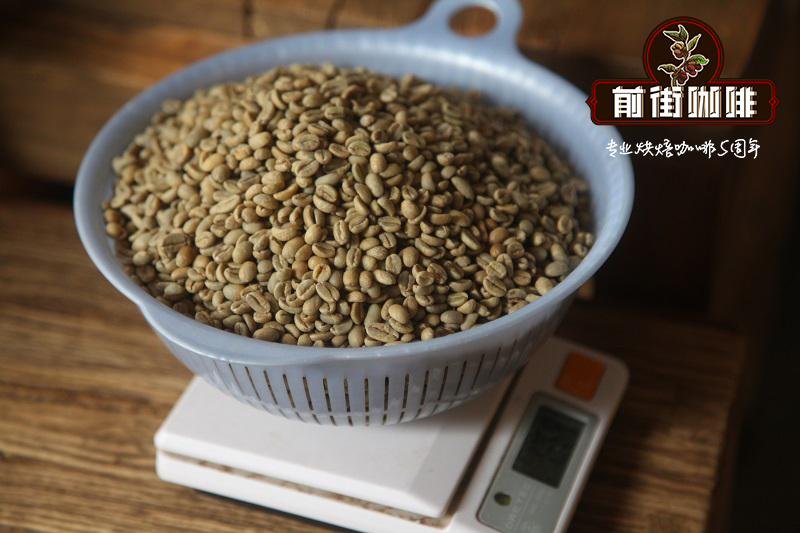Why is Bolivia called Coffee Paradise an introduction to the characteristics of coffee in La Paz, Bolivia

If you want to talk about the paradise of coffee beans, it is Bolivia. This producing area can be regarded as one of the most recommended boutique coffee producing areas. Most of the coffee beans in this producing area are a little sweet and very pleasing. The number of coffee beans is very small.
This country, located in Central and South America, is one of the five most diverse countries in the world, surrounded by five countries. The topography and climate are very diverse: there are Illmani peaks up to 6462 meters above sea level, Lake Titicaca, the highest navigable mountain lake in the world, and tropical rain forests at an altitude of 3812 meters. Such a diverse terrain is called a paradise for micro-batches of boutique coffee, but it is not too much.
Bolivia's coffee production is dominated by a smallholder production system, with 23000 small farms ranging in size from 2 to 9 hectares, and in particular, about 40 per cent of Bolivia's coffee culture is mainly sold domestically. The main varieties are Arabica, such as Iron pickup, Kaddura, Cleo, Kaduai and Kadiwen. The production season is from July to November, most of them are washed coffee beans, only some of them are sun-treated.
Almost all the plants in Bolivia are planted organically (we have imported organic Bolivia a few years ago, so it is easy to cook, so the wind review is very good), which is supposed to be the focus of the next slope of boutique development.
Bolivia is such a potential producing area, but it is only a small coffee export area, accounting for less than 0.1% of global output. Why?
However, Bolivian production has declined year by year in recent years. From 1997 to 2014, the export volume dropped to only 1 stroke 4 every year. According to Roast Magazine, its coffee production ranked 38th and even lagged behind the United States, which ranked 35th.
The main reason is Bolivia's backward economic development and infrastructure. Bolivia is still the poorest country in South America. Although Bolivia's unique changeable terrain is beneficial to the growth of coffee, poverty and poor infrastructure are key factors in coffee processing, transportation and quality.
The most famous producing area in Bolivia is La Paz, including Caravani, North & South Yongas, Inquisivi and so on. The region is most famous for one of the most dangerous roads in the world, nicknamed Yongas Road, also known as "the most dangerous road in the world".
To the north of Yonggaz Road, there is a sharp drop of at least 600m (1830 feet), most of which will not exceed 3.2m (10ft) of single-lane width, and the lack of guardrail along the road makes the road very dangerous.
When it is not 05:00, Rain Water, fog and dust will also reduce the visibility of driving. On some sections of the road, the road is very muddy, and from time to time there are loose falling rocks, which can accidentally run out of control and rush down the valley. According to official statistics, there are an average of about 209 traffic accidents on Yongjas Road each year, resulting in 96 deaths.
In such a dangerous road, it is no wonder that it is not easy for Bolivia to export coffee beans, and it is also difficult for the outside world to obtain. Heavenly delicacy can only be delivered to the buyers of boutique coffee by the road of death, so fine micro-batches of Bolivian coffee can be said to be very precious and hard to find.
Even if the environment is so suitable for the development of coffee beans, poor infrastructure has become the biggest obstacle to coffee processing, transportation and export, so the output is far lower than that of other coffee boutique countries. Every time I get Bolivian beans, they are very precious.
Although Bolivia's coffee share is small and its popularity is not high, Bolivian coffee beans are almost all sweet, with floral, creamy and chocolate rhymes that almost everyone will like. The flavor is very direct and easy to understand, and there is great potential to grow amazing varieties.
Important Notice :
前街咖啡 FrontStreet Coffee has moved to new addredd:
FrontStreet Coffee Address: 315,Donghua East Road,GuangZhou
Tel:020 38364473
- Prev

Congo coffee variety is Arabica Congo Muungano cooperative washed coffee flavor introduction
Congo MUUNGANO Cooperative Country: Democratic Republic of Congo Farm: Smallholder Altitude: 1480-2000 M Variety: Bourbon Method of preparation: Washed craft flavor, raisins, sour grapefruit, light citrus and light clove aromas reminiscent of roasted spices that will plump your palate. Warm, rich and complex. Story Muungano Cooperative is located at the base
- Next

What is the difference between Golden Honey treatment and General Honey treatment Pearl Paloma Manor Golden Honey Coffee
Honey treatment is almost synonymous with Costa Rica! Honey treatment was first born to improve the fermented water washing method, which has a history of hundreds of years; there are two kinds of water washing methods, one is the traditional water washing method, and the other is to scrape off the pectin layer adhered to the surface of coffee seeds mechanically, and the shell beans after scraping will follow the beans that have been fermented and washed.
Related
- Detailed explanation of Jadeite planting Land in Panamanian Jadeite Manor introduction to the grading system of Jadeite competitive bidding, Red bid, Green bid and Rose Summer
- Story of Coffee planting in Brenka region of Costa Rica Stonehenge Manor anaerobic heavy honey treatment of flavor mouth
- What's on the barrel of Blue Mountain Coffee beans?
- Can American coffee also pull flowers? How to use hot American style to pull out a good-looking pattern?
- Can you make a cold extract with coffee beans? What is the right proportion for cold-extracted coffee formula?
- Indonesian PWN Gold Mandrine Coffee Origin Features Flavor How to Chong? Mandolin coffee is American.
- A brief introduction to the flavor characteristics of Brazilian yellow bourbon coffee beans
- What is the effect of different water quality on the flavor of cold-extracted coffee? What kind of water is best for brewing coffee?
- Why do you think of Rose Summer whenever you mention Panamanian coffee?
- Introduction to the characteristics of authentic blue mountain coffee bean producing areas? What is the CIB Coffee Authority in Jamaica?

